DevSecOps - Kubernetes DevOps & Security
DevSecOps Pipeline
Demo OWASP ZAP Jenkins Scan
Integrate OWASP ZAP security testing into your Jenkins CI/CD workflow by leveraging the OpenAPI spec exposed at /v3/api-docs in your Spring Boot application. This guide walks you through updating your Jenkinsfile, creating a ZAP scan script, publishing HTML reports, and fixing security headers.
Prerequisites
| Prerequisite | Description |
|---|---|
| Spring Boot + Springdoc | Exposes the OpenAPI JSON at /v3/api-docs. |
| Jenkins with Kubernetes | Uses withKubeConfig for running stages against a Kubernetes cluster. |
| jq | Parses JSON output from kubectl. |
| Docker & OWASP ZAP image | owasp/zap2docker-weekly for running the scan. |
1. Update the Jenkinsfile
Add an OWASP ZAP – DAST stage after your integration tests, and configure the post section to publish the HTML report.
| Stage | Purpose |
|---|---|
| Integration Tests - DEV | Run integration-test.sh and rollback on failure. |
| OWASP ZAP - DAST | Execute zap.sh to scan the API endpoints defined in OpenAPI. |
pipeline {
agent any
stages {
stage('Integration Tests - DEV') {
steps {
script {
try {
withKubeConfig(credentialsId: 'kubeconfig') {
sh 'bash integration-test.sh'
}
} catch (e) {
withKubeConfig(credentialsId: 'kubeconfig') {
sh "kubectl -n default rollout undo deploy ${deploymentName}"
}
throw e
}
}
}
}
stage('OWASP ZAP - DAST') {
steps {
withKubeConfig(credentialsId: 'kubeconfig') {
sh 'bash zap.sh'
}
}
}
}
post {
always {
junit 'target/surefire-reports/*.xml'
jacoco execPattern: 'target/jacoco.exec'
pitmutation mutationStatsFile: '**/target/pit-reports/**/mutations.xml'
dependencyCheckPublisher pattern: 'target/dependency-check-report.xml'
publishHTML(
allowMissing: false,
alwaysLinkToLastBuild: true,
keepAll: true,
reportDir: 'owasp-zap-report',
reportFiles: 'zap_report.html',
reportName: 'OWASP ZAP HTML Report',
reportTitles: 'OWASP ZAP HTML Report'
)
}
}
}
2. Create the zap.sh Script
This script retrieves your service’s NodePort, invokes the ZAP API scan against the OpenAPI spec, and organizes the report for Jenkins.
#!/bin/bash
# Fetch the NodePort that exposes our service
PORT=$(kubectl -n default get svc ${serviceName} -o json | jq .spec.ports[0].nodePort)
# Ensure write permissions for the report directory
chmod 777 $(pwd)
# Run the OWASP ZAP API scan against the OpenAPI spec
docker run \
-v $(pwd):/zap/wrk/:rw \
-t owasp/zap2docker-weekly \
zap-api-scan.py \
-t $applicationURL:$PORT/v3/api-docs \
-f openapi \
-r zap_report.html
exit_code=$?
# Move the HTML report into its own folder
mkdir -p owasp-zap-report
mv zap_report.html owasp-zap-report
echo "Exit Code: $exit_code"
if [[ $exit_code -ne 0 ]]; then
echo "OWASP ZAP found vulnerabilities. Please check the HTML report."
exit 1
else
echo "No vulnerabilities detected by OWASP ZAP."
fi
Save this as zap.sh, make it executable (chmod +x zap.sh), and commit it alongside your Jenkinsfile.
Warning
If OWASP ZAP exits with a non-zero code, the pipeline will fail. Review the HTML report to triage any findings.
3. Configure Jenkins to Publish HTML
Use the Pipeline Syntax Snippet Generator in Jenkins to configure the publishHTML step:
- HTML directory:
owasp-zap-report - Index page(s):
zap_report.html - Report title: OWASP ZAP HTML Report
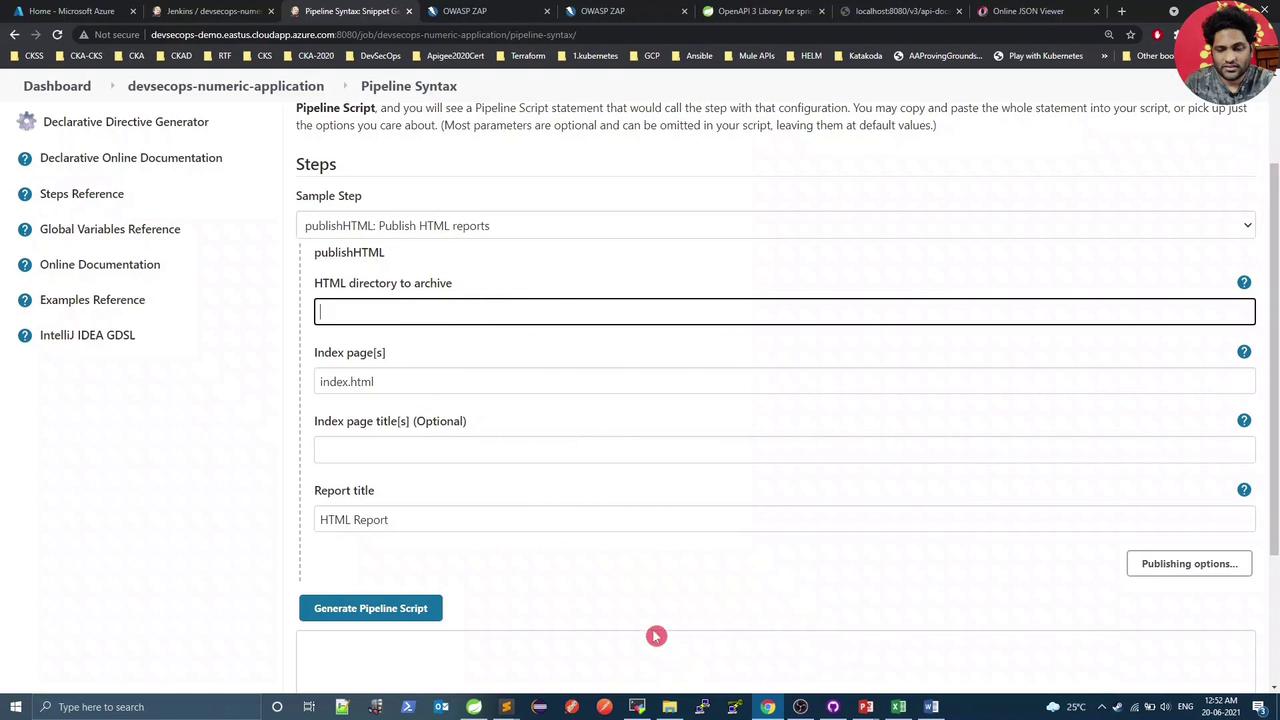
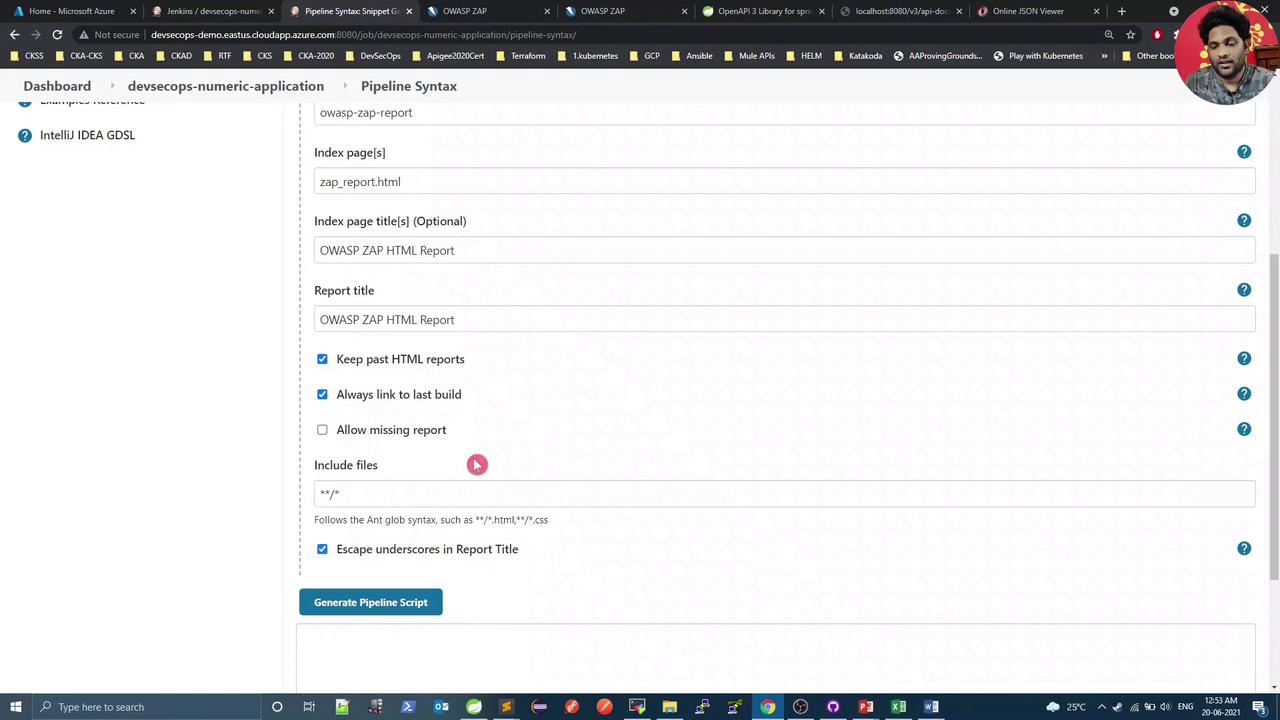
4. Trigger a Build and Review
After pushing your commits, Jenkins will run a new build including the OWASP ZAP – DAST stage:
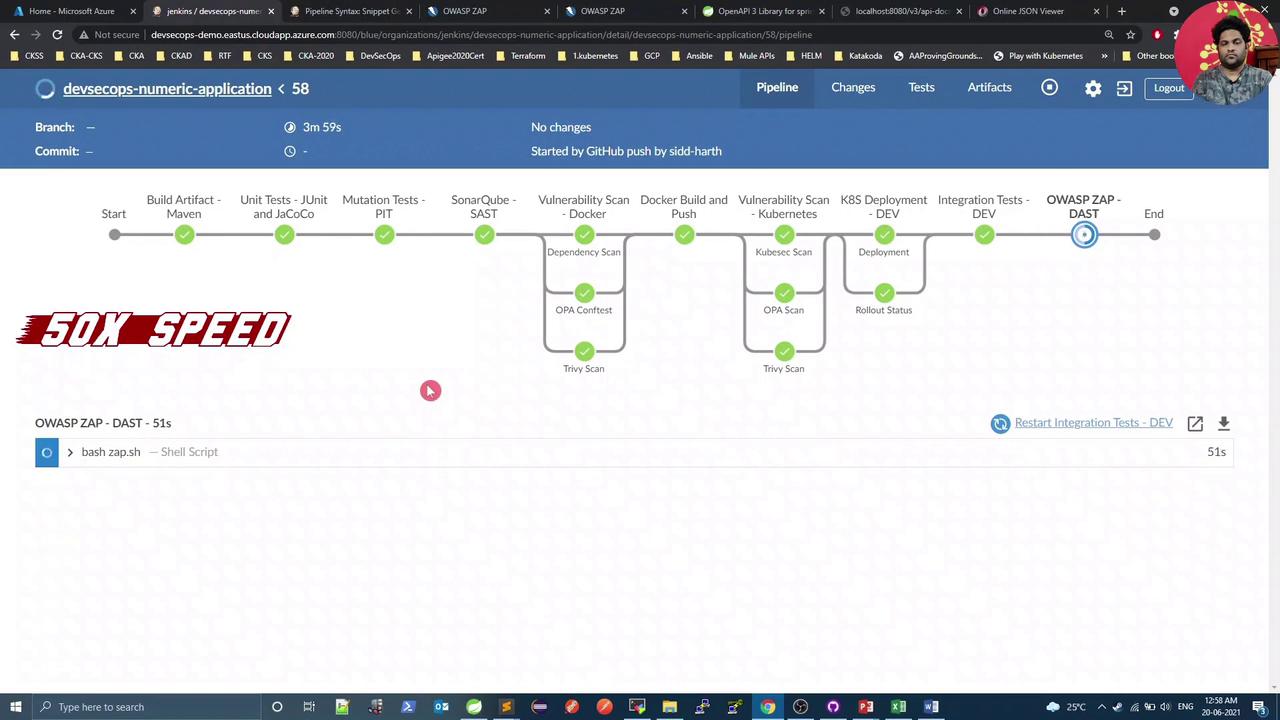
In the console output, you will see ZAP importing your API endpoints and executing its security rules:
...
Number of Imported URLs: 8
PASS: Directory Browsing [0]
...
WARN-NEW: Unexpected Content-Type returned [100001] x 3
WARN-NEW: X-Content-Type-Options Header Missing [10021] x 4
FAIL-NEW: ? FAIL-IMPROG: 0 INFO: 0 IGNORE: 0 PASS: 114
Exit Code 2:
OWASP ZAP Report has either Low/Medium/High Risk. Please check the HTML Report
5. View the Published HTML Report
Open the OWASP ZAP HTML Report link on your Jenkins build page to explore vulnerabilities:
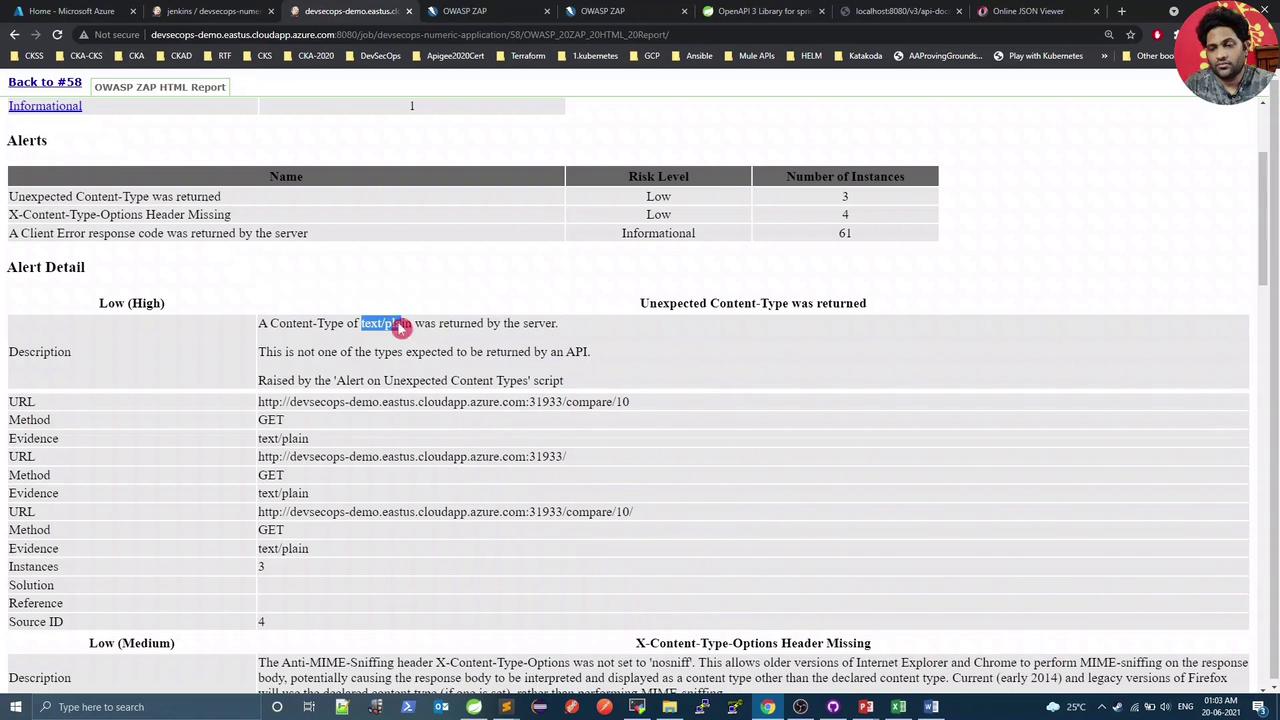
Select any alert for detailed information:

In this demo,
text/plainresponses are expected and can be treated as false positives, but the missingX-Content-Type-Options: nosniffheader is a genuine low-risk issue.
6. Verify and Fix the Missing Header
Open your application endpoint in a browser and inspect the response headers under Developer Tools → Network. You should see that X-Content-Type-Options is absent:
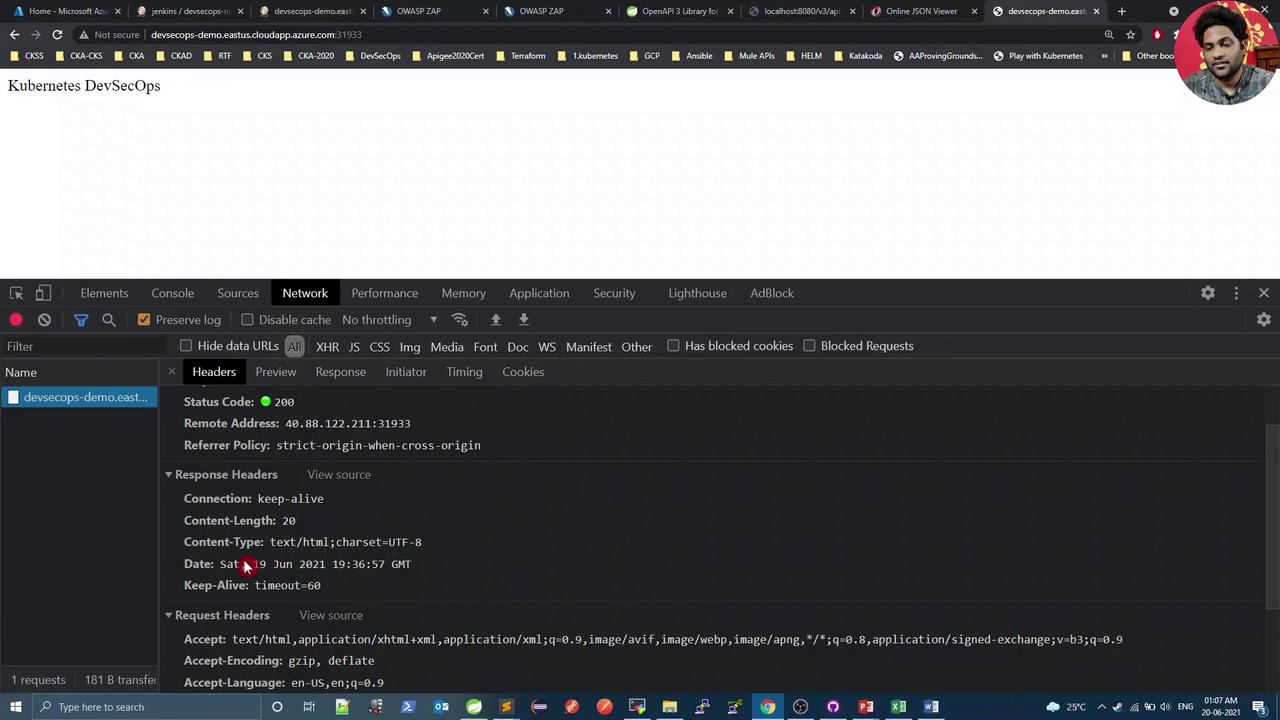
Next, enhance your Spring Boot security configuration to include the X-Content-Type-Options: nosniff header and eliminate the warning.
Links and References
- Springdoc OpenAPI
- OWASP ZAP DAST with Docker
- Jenkins Pipeline Syntax
- OWASP ZAP Official Documentation
- Jenkins HTML Publisher Plugin
Watch Video
Watch video content